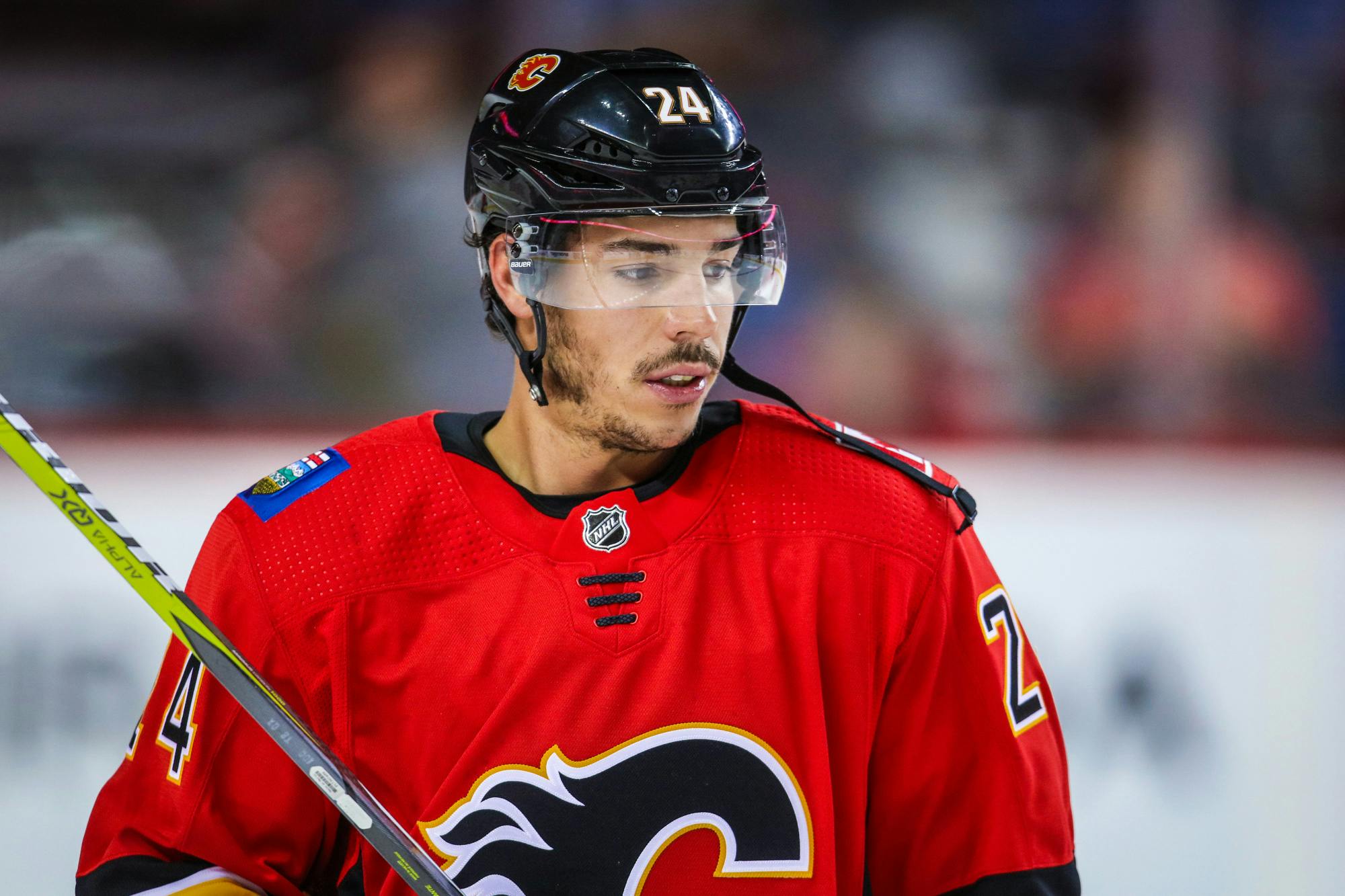FlamesNation player evaluation: Travis Hamonic

By Ryan Pike
5 years agoArguably the biggest move of the 2017 offseason among the entire National Hockey League was made by the Calgary Flames when they acquired Travis Hamonic at the 2017 NHL Draft. The draft floor was abuzz, and Hamonic’s arrival automatically heralded the opening of the Flames’ window of contention. Expectations were high for the Manitoba product… and seemingly were completely disconnected from the type of player Hamonic has been since originally joining the New York Islanders in 2010-11.
By the standards of a top-flight offensive defender, Hamonic disappointed in 2017-18. By his own standards – that of a meat-and-potatoes defensive blueliner – he was uneven to start but settled in nicely.
2017-18 season summary
Hamonic was paired immediately with TJ Brodie, and ended up playing almost exclusively with Brodie on the second pairing aside from a handful of instances where Glen Gulutzan swapped his pairings and a couple short stretches that Hamonic missed due to injury.
The challenges he had playing with Brodie – particularly regarding communications, positional tendencies and playing style – seemed to lessen as the season wore on. But the issues were prominent enough for Elliotte Friedman to make note of them in a 31 Thoughts column in January, referencing Brendan Dillon’s challenges adjusting to playing with Brent Burns in San Jose:
22. Dillon’s comments about getting used to Burns make me wonder about T.J. Brodie/Travis Hamonic’s early struggles in Calgary. Hamonic is structure, Brodie is a jazz virtuoso. It takes time.
It improved, but the duo never developed enough chemistry to be considered a strong second pairing (in the way that Mark Giordano and Dougie Hamilton are considered a strong first pairing). That was reflected in Hamonic’s (lack of) offensive production.
| Games played | Goals | Assists | Points | TOI/GP | 5v5 CF% | 5v5 CF% rel | OZS% | PDO |
| 74 | 1 | 10 | 11 | 20:42 | 51.37% | -3.33% | 50.00% | 0.989 |
After being limited to 49 games in 2016-17 – a concern expressed by those nervous about his acquisition – Hamonic suited up for 74 games and played a lot of hockey. He developed some chemistry with Giordano as the top pairing on the first penalty kill unit, but he didn’t see any significant power play minutes.
If you had hoped for another Hamilton-esque player acquired for a Hamilton-esque price, you’re probably disappointed. But if you had hoped for a Robyn Regehr-like shutdown blueliner, he was absolutely fine for that role.
Compared to last season
In everything but goal differential, Hamonic had one of the better seasons of his NHL career. He played more than he did last season and was used in a lot of situations. He only scored once, a product of his personal shooting percentage cratering to 0.9% after being 4.1% in 2016-17 in Brooklyn – the difference was another three goals. Even if he had shot closer to his career average of 3.6% he would’ve scored twice more.
Aside from his on-ice shooting percentage (6.3%, in the bottom third of regular NHL defenders), Hamonic’s underlyings and rate stats were strong. He had his second-best Corsi For Per 60 Minutes rate (his line generated puck possession) and his third-best Corsi Against Per 60 Minutes rate (his line suppressed chances well). Heck, he generated his lowest Scoring Chances Against Per 60 and High Danger Chances Against Per 60 in his career, but because nothing went in when he was on the ice – and due to the Wacky Misadventures of TJ and Travis in the first few months of the season – he was in the red quite a lot.
In short? Hamonic wasn’t as bad offensively or defensive as his counting statistics – goals, points, plus/minus – would indicate. As much as anybody who wore a Flames sweater last season, he was a victim of the bounces.
What about next season?
Hamonic will likely be back next season. He’ll play second or third pairing behind Giordano and Hamilton. If there are no personnel changes, I’d expect new head coach Bill Peters to test the waters with Brodie and Hamonic and see how things look. But considering how analytics-savvy Peters is said to be, and given the importance of a good start next season, I’d be curious if he tries Hamonic out with Brett Kulak. They played a little bit here and there last season and that duo’s Relative Corsi (+0.37%) was a lot better than his results with Brodie (-2.74%). It’s definitely worth a shot.
In terms of on-ice performance, expect Hamonic in 2018-19 to look more or less the same as he did in 2017-18. He’s a stay-at-home defender through and through who will probably never post Hamilton-esque numbers. That said, his offensive results are bound to bounce back a bit after being snake-bit by preposterously bad luck last season.
| #5 – Mark Giordano | #7 – TJ Brodie |
| #8 – Chris Stewart | #10 – Kris Versteeg |
| #11 – Mikael Backlund | #13 – Johnny Gaudreau |
| #15 – Tanner Glass | #18 – Matt Stajan |
| #19 – Matthew Tkachuk | #20 – Curtis Lazar |
| #21 – Garnet Hathaway | #23 – Sean Monahan |
Recent articles from Ryan Pike





